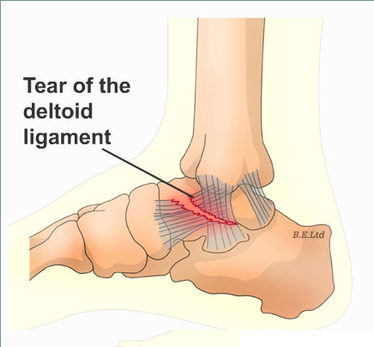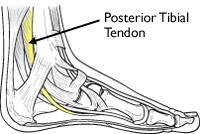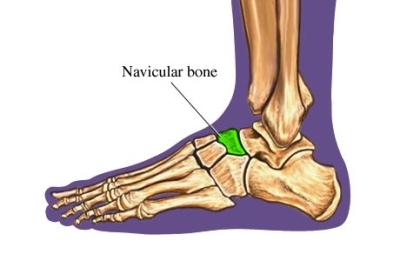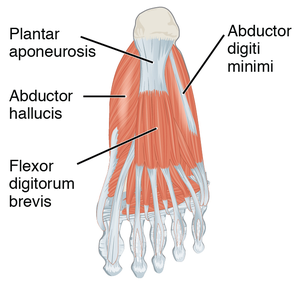Inside Foot Pain, Ankle (Swelling, Running, Walking): 7 Causes

Last updated on July 26th, 2018 at 04:25 pm
Question: What causes inside foot pain during activity such as walking or running?
The human foot is a complex structure of multiple joints, tendons, ligament, and muscles.
While walking or running, it is estimated that your foot carries four times your normal body weight. This means, if you have a problem with your foot or ankle, you will undoubtedly feel uncomfortable.
One common complaint experienced by athletes, especially those involved with jumping and running, is inside foot pain. This pain is on the medial side of the foot. Depending on the cause, pain worsens during activity and subside after taking a rest.
In mild cases, inner foot pain happens because of bruises to your skin from direct injury. If this happens, you will still be able to move around, and pain will subside in a few days.
Having said that, medial foot pain can be due to a serious medical issue. In fact, it could result from an ankle sprain.
An ankle sprain happens when your foot is abruptly twisted with a partial or complete tear of ligament around your ankle joint. If this happens, you may experience swelling and pain inside of the foot.
Other conditions that can result in pain inside of foot are
- Gout affecting the big toe
- Bunion
- Navicular stress fracture
- Inflammation of the posterior tibial tendon
- Abductor hallucis sprain
Therefore, if you have persistent sharp pain on the inner side of your foot, it could be something serious. It is best to talk to your doctor especially if the pain is recurring.
Here are some questions you will be asked by your doctor to make a diagnosis.
- When did inside foot pain start?
- Does inner foot pain worsen while running, walking, jumping, or standing for long hours?
- Does pain disappear after taking a rest?
- Do you experience swelling of the inside of foot?
- Do you use high heels or wear tight fitted narrow shoes?
- Are there any family members with a similar type of foot pain?
- Do you feel severe pain when pressure is applied to the top of foot arch?
This article explains the causes of inside foot pain and home remedies you can try before seeing your doctor.
What causes inside foot pain and swelling?
1. Ankle Sprain
Ankle sprain is a common cause of pain on the inside of the foot. It accounts for more than 70 percent of all ankle injuries. So, if you have mild or severe inside foot pain, it could be due to an ankle sprain.
Ordinarily, your ankle joint supports your entire body weight. This is through the compact nature of the ankle joint made up of three bones – talus, fibular, tibia.
 On each side of the ankle are several ligaments that connect bones and ensure ankle stability. These ligaments are the lateral and deltoid ligaments. The lateral ligaments of the ankle are situated on the outside of the foot while the deltoid ligament is located on the inner side of the foot. If you unexpected twist any of these ligaments, it could result in pain.
On each side of the ankle are several ligaments that connect bones and ensure ankle stability. These ligaments are the lateral and deltoid ligaments. The lateral ligaments of the ankle are situated on the outside of the foot while the deltoid ligament is located on the inner side of the foot. If you unexpected twist any of these ligaments, it could result in pain.
Most commonly affected are lateral ligaments causing outer foot pain. When the deltoid ligament is affected, you will experience swelling and pain inside of the ankle.
What causes ankle sprain?
If you have a deltoid ligament injury, it usually results from severe injuries. Most times, due to the force needed to cause deltoid ligament sprain, there are accompanying pathologies like a fracture.
Deltoid ligament sprain occurs when sudden force rolls the foot outwardly (eversion). This can result in a partial or complete tear of the deltoid ligament.
What are the symptoms of an ankle sprain?
- Medial foot pain and swelling
- Inability to walk or run
- Inability to bear weight on the affected ankle
- Due to the severity of the injury, it is also common to see bruises on foot.
How to treat medial foot pain due to ankle sprain?
First of all, most ankle sprain injuries rarely require any surgery. Conservative management works with the resolution of symptoms within six weeks. In mild injuries, you will feel better within one or two weeks.
Conservative treatment involves the RICE treatment which acts as first aid for ankle injuries. It involves
- Resting of the right or left injured foot. This immobilization is essential to prevent further insults to your ligaments.
- Compression bandages to help with swelling associated with the sprain
- Apply ice to the foot for about 10 minutes 4 – 8 times daily
- Elevate the foot above the heart
- Over-the-counter painkillers will be useful too. This will help subside ankle inflammation and pain. Ibuprofen and Naproxen are very useful.
2. Posterior tibial tendonitis
Another reason for pain on the inner side of the foot is posterior tibial tendon inflammation.
 Anatomically, the posterior tibial tendon runs on the inside of the foot and attaches at the inner foot bones (navicular and cuneiform bones). Its primary function is to support your ankle and the arch of the foot.
Anatomically, the posterior tibial tendon runs on the inside of the foot and attaches at the inner foot bones (navicular and cuneiform bones). Its primary function is to support your ankle and the arch of the foot.
What causes posterior tibial tendonitis?
Injury to the posterior tibial tendon can happen from direct trauma, a fall, or overuse of the ankle and foot common amongst athletes (Basketball and tennis players).
If this happens, there is inflammation of the tendon resulting in medial foot pain. In severe cases, the posterior tibial tendon is completely torn.
What symptoms to expect?
- In early stages, you will experience redness, pain, and no swelling
- In severe cases, inside foot pain and swelling will occur.
- Flattening of the foot
- Back of Ankle pain
- Pain on the inside of foot near arch
- Inner foot pain that worsens when walking or running
How is posterior tibial tendonitis treated?
- Rest foot
- use ice
- Immobilize foot
- Bracing
- Orthotics
- Steroid Injections
In severe cases, surgery will be required.
3. Navicular stress fracture
The navicular bone is situated on the inside of your foot. If this bone gets fractured, you will experience medial foot pain.
Navicular stress fracture mostly affects individuals who overuse the foot and ankle, especially athletes. Repetitive injury to the navicular bone will cause tiny cracks in the bone. In severe cases, bone breaks open and is displaced.
Symptoms of Navicular fracture are
- Middle foot pain and swelling
- Pain on top of the foot when pressure applied
- Pain on the inside of the foot near arch
- Swelling of the inside of foot over the navicular bone
How is navicular stress fracture treated?
Treatment options for navicular fracture depend on if the fractured bone is displaced or not. Treatment involves immobilization of the foot for about six weeks. If there is displacement of the fractured bone, surgery is required.
Your doctor will also request a bone scan which is very sensitive to make an early diagnosis. Other investigations required are x-ray and MRI.
4. Injury to the abductor hallucis muscle
The abductor hallucis muscle forms the medial part of the sole and extends from your heel to the medial side of the big toe. Injury to this muscle can cause pain inside the foot.
5. Gout
Deposition of uric acid crystals at the joint of your big toes can cause severe pain.
